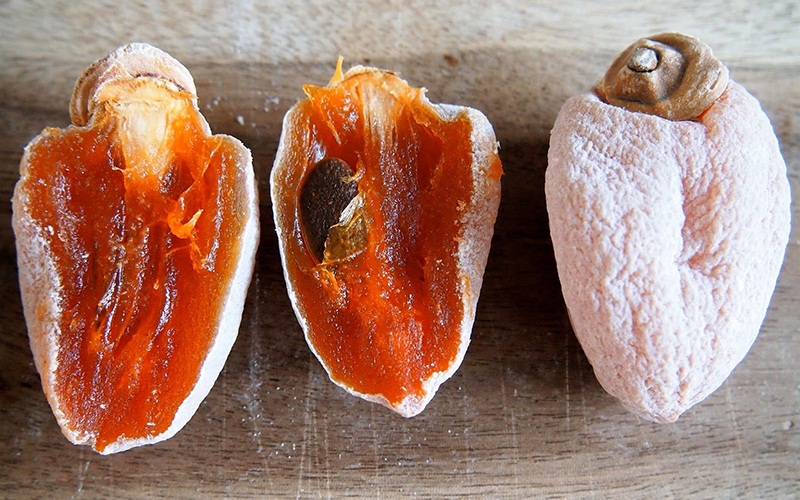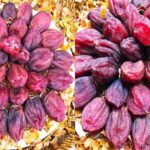Hồng treo gió is a popular treat for many, known for its deliciously soft and sweet taste without the overpowering sweetness of other preserves. However, some people worry when, over time, a white powdery substance appears on the surface, leading them to question if their treat has gone bad or is even authentic.
So, what is this white powder, and is it mold? Let’s find out together!
1 Why Does Hồng Treo Gió Have a White Powder?
 The white powder on Hồng Treo Gió is a result of natural fermentation and is called fructose.
The white powder on Hồng Treo Gió is a result of natural fermentation and is called fructose.
Hồng treo gió, when left for a while, undergoes a natural fermentation process, resulting in the formation of a natural pinkish coating on its surface. This coating is the white powder many mistake for mold.
2 What Is Fructose, and Where Is It Found?
 Fructose is a natural sugar found in fruits, with sweeter fruits like mangoes and jackfruits containing higher amounts.
Fructose is a natural sugar found in fruits, with sweeter fruits like mangoes and jackfruits containing higher amounts.
Fructose is a natural sugar found in almost all fruits, with sweeter varieties like mangoes, jackfruits, and grapes containing higher amounts. While fruits are generally less sugary than other sweet treats, they still contain natural sugars like fructose.
 Fructose is one of two sugars found in fruit, the other being glucose.
Fructose is one of two sugars found in fruit, the other being glucose.
Fruits typically contain both fructose and glucose, usually in a 50:50 ratio, though this can vary. Unlike glucose, which raises blood sugar levels, fructose does not as it is broken down by the liver.
3 Why Does Hồng Treo Gió Develop This Powder?
 The pinkish coating is a natural part of the fermentation process and helps keep the inside of the treat soft, sweet, and tasty.
The pinkish coating is a natural part of the fermentation process and helps keep the inside of the treat soft, sweet, and tasty.
Over time, Hồng treo gió, like other preserved fruits, will develop this white powder due to natural fermentation. The longer it is stored, the more prominent this coating becomes. This coating is entirely natural and helps keep the inside of the treat soft and sweet, so there’s no cause for concern. However, if the coating turns a different color, it’s best to discard it for health reasons.
We hope that this article has clarified the nature of the white powder on Hồng Treo Gió. If you notice this on your treat, there’s no need to worry!
“The Ultimate Guide to Preserving Holiday Treats: Keep Your Family’s Fruit Tray Fresh Long After the New Year.”
Introducing the ultimate guide to preserving your favorite jams and jellies! Say goodbye to sticky messes and moldy surprises, and hello to long-lasting, delicious spreads. From traditional methods to modern hacks, we’ll explore the best ways to keep your jams and jellies fresh and flavorful. Get ready to stock up on your favorite flavors and enjoy them for months to come!

































